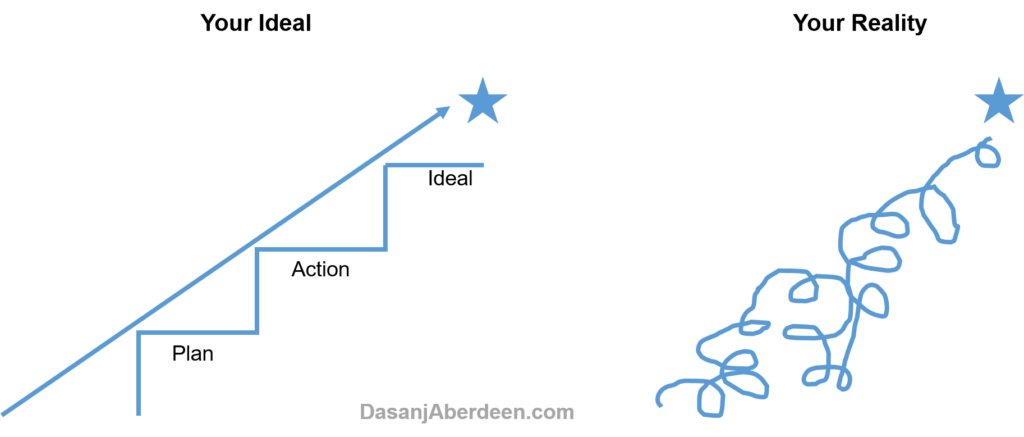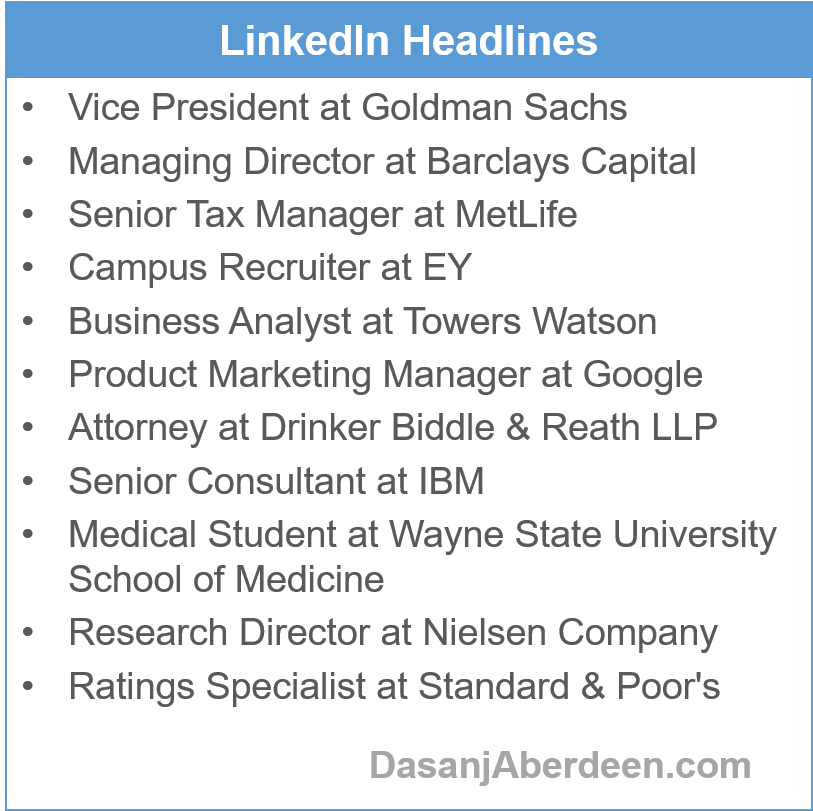As humans, we seek a higher purpose, meaning and guidance. What is the meaning of life? Who or what can show us the way? We like to know what the end game looks like and our role and purpose in the big picture.
Although there is no book with official steps on living life, society has established ideals which emphasize how things should be. As these translate into norms and are reinforced around us, they influence our vision for our path. Ultimately, we align our lives to meet society’s expectations. Looking around, and in my own life, examples of this are easy to find.
The Ideal. Ideals are what we aspire to achieve in life and they drive us. “If only I had _____, I would be (happier, more successful etc.).” There is always something out of reach that we seek and conclude will provide some type of satisfaction. How do we come to this conclusion? We adopt what we hear and see around us, including what society deems “acceptable” or “right.” For example, society’s path to a “good life” is a good education, a good job, a family and house with a white picket fence. We hear this from family, teachers, guidance counselors, college professors, employers etc. If this idea is so pervasive, how can it not be true? Once we subscribe to it ourselves, we adapt our own path based on decisions and actions that are confined to outside judgment, meeting other people’s expectations, seeking approval and keeping up appearances.
The Plan. In order to meet our ideals, we outline a plan to make it happen. We believe that if we take these steps, exactly as planned, we’ll get what we want. Again, society says this is the path everyone should take so why wouldn’t it work for you? This process gives our lives the meaning we incessantly crave. Each day, we wake up knowing our why. By taking each outlined step, we believe we’re working to achieve our ideals and our ultimate purpose. We’re convinced that we’ll get what we want and there’s rarely a thought that things won’t go as planned.
The Reality. Meanwhile, life is happening and it has its own idea of how things will unfold. This can manifest in a variety of ways: plans going awry, discovering considerations that weren’t included in the plan, unexpected issues showing up, factors that can’t be controlled for taking their own course, etc. These impediments throw off our plan and can postpone or permanently keep us from reaching our ideals.
Where does this leave us? It creates a gap between the reality and the ideal. Society rarely prepares us for such disruptions. We’re left with a plan that is no longer effective since it doesn’t account for any of the curve balls. We no longer have the meaning our plan gave us, and we’re lost without clarity on how to navigate toward our ideals.
Since we didn’t account for things not going as planned, panic sets in. There is no way this can’t work! I can’t let it fail! Let me roll up my sleeves and fix it real-time. I’m going to focus on how I can get it back on track. I can’t imagine it not working out as envisioned and planned. Any alternate solution is “bad.”
What manifests is intense focus to repair, fix, prevent, and control to get things “right” and reduce the probability of failure (think Six Sigma on steroids). Our reaction is in response to not reaching our personal plan, but more often than not, we act out of fear of failing in front of the world. Failure means we won’t achieve the ideals society says we should have; and we fear outside judgment, not meeting other people’s expectations, not obtaining approval and not being able to keep up appearances.
I’ve been down this path many times and after reflecting on a recent instance, I have some new insight on making it more manageable and less exasperating.
There is no tragedy, only the unavoidable. Everything has its reason for being: you only need to distinguish what is temporary from what is lasting. What is temporary?… The unavoidable… and what is lasting?… The lessons of the unavoidable. — Paulo Coelho
Here’s how you can handle the gap between your ideals and your reality better:
- Revisit your premise. Your premise for this entire undertaking is that you think this is what you should be doing, is right and will not lead to failure. And this is all attributed to the meaning assigned by society or you. Whose meaning is the truth or final? Arguably, neither is right, how things should be or will guarantee certain outcomes. But you define the meaning and believe it to be true; the only reason it has power is because you give it power. If this approach and belief system doesn’t serve you, you should stop subscribing to it.
- Don’t label things good or bad. Whether something is good or bad is subjective and depends on who you ask. Would it be bad if half of all the money in the world disappeared? Those with extravagant lifestyles would probably care, but those who already live modestly probably wouldn’t care as much. Let things be, without being good or bad.
- Don’t add stress or pressure. Even if the situation seems malleable, that doesn’t mean you need to add stress and pressure. A rubber band is flexible, but if you continuously pull it or pull it too far, it will snap. Sometimes it is better to do nothing. Leave it alone. Don’t question or try to associate meaning. Give things space to breathe.
- Accept the reality and what happened. What happened happened and it is in the past. Don’t obsess about it, be stuck in it or be held hostage by it.
- Appreciate situations for what they are. Focus on the lessons the past gave you and be grateful for what you have today. You’re better positioned now due to your lessons and experience.
- Embrace the power of now. Take advantage of the present and take action to create positive opportunities. Create your own life the way you want it to be today. Your life today is important and I’d argue more important than any ideal life you aspire to have.
******************************
Do you come across gaps between your ideals and your reality? How do you balance the two? Have you tried any of the suggestions above? How have they worked for you? I’d love to hear your perspective!
Dasanj Aberdeen is an entrepreneurial spirit who embodies the combination of left-brain logic and right-brain creativity. She is a consultant and proponent of multidisciplinary education, approaches and pursuits. She writes about their benefits in modern times and integrating multiple interests into a sustainable and fulfilling lifestyle. She’s a graduate of The Wharton School of the University of Pennsylvania and Temple University with a concentration in Technology & Innovation Management, jointly delivered by the Fox School of Business and College of Engineering.








